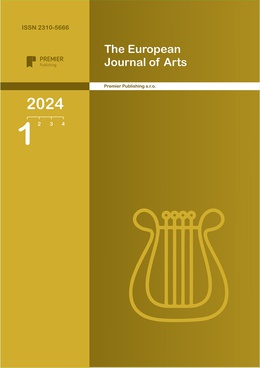UZBEK SUZANE - FROM TRADITION TO MODERNITY
Authors
Khalilov Ruslan Shavkatovich

Share
Annotation
This article highlights the history and contemporary state of Uzbek Suzani, one of the most famous directions of national craftsmanship in Uzbekistan. By analyzing its historical roots, the authors examine the evolution of traditional embroidery techniques, materials, and designs that reflect the rich cultural history of the region. Special attention is given to the symbolism and significance of Suzani motifs, as well as their adaptation to modern conditions and needs. The article emphasizes the importance of preserving this unique art form and its role in the cultural heritage of Uzbekistan.
Research Objective: To comprehensively analyze the art of Suzani in Uzbekistan, as a significant part of the country's cultural heritage, highlighting its history, symbolism, and impact on contemporary art and design. This study includes an examination of historical periods that influenced embroidery styles and techniques, as well as considering the adaptation of traditional embroidery methods to modernity and their application in contemporary artistic projects.
Research Methods: The study of historical sources, including literary works, archival materials, and historical accounts, to reconstruct the history of Suzani and understand its evolution in the context of Uzbekistan's and Central Asia's history. Evaluation and analysis of Suzani samples from the perspective of design, style, color, and technique. Utilization of this analysis to comprehend the cultural and symbolic significance of patterns and motifs.The findings confirm that Suzani embroidery, with its centuries-old history, reflects the cultural and historical shifts of Central Asia. Traditional embroidery techniques and styles are preserved, while simultaneously adapting to contemporary needs. Suzani patterns carry profound symbolic meaning, essential for understanding the cultural identity of the Uzbek people, and exert a significant influence on modern art and design. Additionally, Suzani embroidery plays a crucial role in the economy and social stability of the region, particularly among women, and garners increasing international interest, facilitating cultural exchange and promoting Uzbek culture on a global scale.
Scientific Novelty: This study analyzes the evolution of Uzbek Suzani as a form of decorative and applied art, with a focus on its adaptation to contemporary conditions and globalization. It explores new trends in the use of Suzani in modern design and fashion.
Practical Application: The study advocates for the inclusion of the history and techniques of Suzani in art history and cultural studies curricula. It suggests utilizing Suzani as a key element in promoting tourism in Uzbekistan. The organization of exhibitions and cultural exchanges with other countries is proposed to showcase the uniqueness and beauty of Uzbek Suzani, as well as to facilitate the exchange of experiences with other cultures. These practical applications aim to not only preserve but also develop Uzbek Suzani as an integral part of cultural heritage.
Keywords
Authors
Khalilov Ruslan Shavkatovich

Share
References:
- Gayane Umerova. The Relevance of Traditional Values. In: "Sanat
- Gül Elmira. Suzanne: Embroideries of Uzbekistan. In: "Halcha" Journal, Baku, 2014.
- Sukhareva O.A. Suzani: Central Asian Decorative Embroidery. Moscow: Eastern Literature, Russian Academy of Sciences, 2006.
- Chepelevetskaya G.L. Suzani of Uzbekistan. Tashkent, 1961.
- Elmira Gül. Heavenly and Earthly Gardens: Embroidery of Uzbekistan: The Hidden Meaning of Sacred Texts. Moscow: Marjani Foundation Publishing House, 2013.


